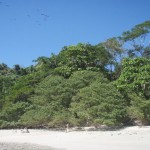
Things to Do in Costa Rica
Cabo Blanco National Park Costa Rica

Cabo Blanco National Park
Cabo Blaco National Park is located in the province of Puntarenas, on the southern tip of the Nicoya Peninsula. It was created by Executive Decree No. 10 of October 21, 1963. Its area is 1,172 hectares and 1,790 hectares land in the marina.
Cabo Blanco is a haven for flora and fauna of the Pacific dry for many marine species. It is of great importance for their scenic beauty.
Cabo Blanco is located within the area of life in the rainforest. Here is dominated by evergreen species mixed with deciduous species. Some of the most common species are the jobo, Indian nude, madrone, guácimo, guarumo chaperno and pochote, commercially valuable species.
In the areas of primary forest stand pochote medlar, and espavel. In this wilderness area have reported 119 species of trees.
The fauna of the reserve is not very diverse. However, there are species of mammals such as deer, howler monkeys, red and white face, the porcupine, agouti, the tepescuinte, hammers, coyote, armadillo and armadillo or ocelot or margay.
Seabirds are very numerous, particularly brown pelicans, frigate birds, gulls of black-heads, terns and brown boobies.
Meanwhile, land birds are the most characteristic toledo, the magpie, the cattle egret, vulture, the red widow, the green heron, the chachalaca, collajero kingfisher, parakeet cabercirrojo aliamarillo and the buzzard.
In marine environments is possible to see many fish, crabs, chitons, snails, lobster, queen conch, shrimp, clams and many other species.
There are four programs of reserve management. The research program aims to develop research, and identify and implement measures for their control and supervision.
The maintenance program that was established for the improvement and construction of facilities within the reserve.
The Agenda for Protection prevents illegal actions within the reserve such as hunting, fishing, fires and any extraction of forest products.
The Environmental Education Program supports community relations to create a favorable atmosphere among the people surrounding the reserve. It also ensures the attention of domestic and foreign tourists who visit the reserve.
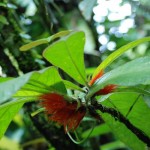
Things to Do in Costa Rica
Costa Rica Braulio Carrillo National Park

Braulio Carrillo National Park
Braulio Carrillo National Park is located northeast of the Central Valley of the Central Volcanic Cordillera, between Poas and Irazu beds. Includes Black and Barba volcanoes Cacho, from the Alto de la Palma (Moravia) in the La Selva Biological Station (Sarapiquí). It was created by Law No. 8357-A, April 5, 1978. Its extension is of 45.899.2 hectares.
This park is dedicated to the Hero of the Nation, Mr. Braulio Carrillo, third Head of State of Costa Rcia (1835-37 and 1838-42), who tracked the efforts to open a road connecting the Central Valley to Matina, in the the Atlantic coast.
This area is located in a zone of irregular topography of the country.
The landscape consists of high mountains densely covered with forests and many rivers. The topography and high rainfall, about 4,500 mm per year on average, result in the formation of countless waterfalls.
Parks extinct volcanoes continent. The Black Cacho, very remarkable for its conical shape, and Barva with several craters, Laguna Barva, circular, about 70 meters in diameter and clear water lagoon and Danta, about 500 meters in diameter. The Three Marias clearly observads hills from San Jose, are the remains of a structure that existed there caldérica.
The park’s vegetation is the evergreen forest of great density and botanical complexity. The forest presents variations in different environmental conditions, topography, drainage, temperature, cloudiness and precipitation.
The highest forests and greater wealth of species found in the lowlands, in the highest parts and broken trees are shorter and deformed and the total number of species is lower. Most of the park is covered by primary forest, which Exiten some 6,000 species of plants representing half of all species throughout the country. The Manu, mahogany, oak, and gavillán caobilla are relatively abundant.
They are also the botarrama, ceiba, the yos, parrot and ojoche; other species, however, are in danger of extinction, like the Nazarene, pumpkin, saw palmetto and sweet súrtuba. In the upper parts of the park, specifically the Barva Volcano, the flora is characteristic of cloud forest, known as the ciprecillo species, candelillo, white oak and cedrillo.
The park offers a great diversity of wildlife. Highlights the rich avifauna represented in almost 515 species of resident and migratory birds. Observed the king vulture, the umbrella bird, the goldfinch and the quetzal.
Among the species of mammals are howler monkeys, white face and red and the tapir, puma and jaguar, peccary, the bear beekeeper, the hammer, the ibex, the blonde and coyote. There are also species that threaten to extinguierse hunting, as in the case of the peacock and the tepezcuinte.
Frogs and toads are abundant in the area. Located in the Barva Volcano, an endemic species, the toad Bufo holdridgei. A reptile existing in the park is the bushmaster, the largest venomous snake in Africa.
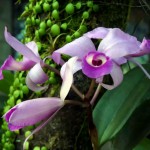
Things to Do in Costa Rica
National Park of Guanacaste
Biological Reserve, Lomas Barbudal

Biological Reserve Lomas de Barbudal
Biological Reserve Lomas Barbudal is located in Bagaces San Ramon, 15 km southwest of the city of Bagaces, province of Guanacaste.
Its creation as a national reserve by Executive Order NO. 16849-MAG of 23 January 1986. It has an area of 2.279 hectares.
This reserve protects a dry tropical forest rich in species of insects, particularly bees, wasps and butterflies and moths.
It is estimated that there are about 250 species of bees and 60 moths.
Another feature that makes Lomas Barbudal important wilderness area is the presence even during the summer of abundant water sources, such as Cabuyo River, numerous creeks and natural springs.
Lamas Barbudal Forest
Barbudal has several plant associations such as the savanna woodland, evergreen forest, riparian forest which is located next to streams and tropical dry forest, the latter being the most extensive.
In the deciduous forest most of the trees lose their leaves during the dry season. The most common species here are the kapok tree, the naked Indian, jobo, the yellow rind, rum, rum, bay leaf, bobbin and malacahuite mule.
Riparian forests are found along rivers and streams.
They are evergreen, dense and rich in variety and especially solitary bees.
The espavel, the gaupinol, the medlar, cinnamon, ojoche yellow and Cocora, are common species Jan this forest.
The savanna is an open area covered with grass and scattered trees with species of wood or raspaguacal chumico and night.
There are hills Barbudal timber species such as rum, rum, pochote, cristobal, mahogany and cocobolo that are endangered in the country eresot.
Many of these trees, shrubs and numerous other smaller plants on producing excellent fruit, nectar and pollen oils for birds, and insects such as mamífereos domestic and wild bees. There are about 250 species of bees in Lomas Barbudal.
These species are of the very important area of entomology, because many of them are unique in the country and are in a high number concentration and diversity in a relatively small area such as the wooded savannah.
Mammals are less abundant. However, you can see white-tailed deer, howler and white-faced momos, raccoons coatis, peccaries, squirrels and jaguarundis among others. There is also a large number of reptiles and fish.
As for the birds in this area have observed about 130 espeices, the most features the peacocks, the yellow-cockaded loreas, the king of vultures, toucan or black Curre
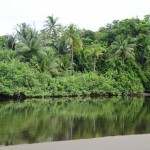
Things to Do in Costa Rica
Costa Rica Corcovado National Park
The Corcovado National Park is located on the Pacific coast, in the Osa Peninsula in the province of Puntarenas.

Corcobado National Park
It was established by Executive Order No. 5357-A, October 24, 1975. It has an area of 54,538.9 hectares in the terrestrial and 2,400 in the Navy.
Corcovado is located in the living area for the tropical rainforest in the South Pacific region of Costa Rica, and may be said that no other wild area of the country protects the resources of plants and animals in that region.
This wilderness area is considered an excellent living laboratory to study the structure and functioning of tropical ecosystems and their relationships.
The rain forests of Corcovado National Park, are among the last holdouts who still maintain the rainforest ecosystem, without changes in the American Pacific, with over 5,000 mm rainfall annually.
The park facilitates research and scientific studies, and promotes environmental education.
Corcovado National Park Fauna
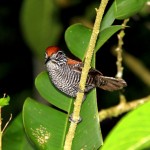
Corcobado National Park Costa Rica
There are about 500 species of trees throughout the park, which is equivalent to a quarter of all species of trees in Costa Rica.
The tropical forests of protected areas are not only the best of these ecosystems in the Pacific slope, but also the latest in Central America.
The Corcovado National Park vegetation consists mainly of tropical moist forest habitats with the following. Monatña forest, cloud forest, lowland forest, swamp forest, Yolillal, herbaceous swamps, mangroves, cliffs, vegetation and coastal vegetation.
Plant species are most characteristic of Nazareth, poponjoche guayabón the sangregao, ojoche, the male espavel and cedar, among others.
Corcovado National Park protects several species are endangered as the big cats and reptiles, protects well, and endemic bird species of restricted distribution.
We know of the existence of 104 species of mammals, 367 birds, 117 amphibians and reptiles and 40 species of freshwater fish.
Among the most prominent animals are the tapir, the jaguar, puma, ocelot, giant anteater, capuchin monkeys, howler monkey and the white face and red squirrel, red macaw, the white hawk, the kettle water moorhen and grenadier.
Moreover, the king of the vultures, the mountain chicken, pigeon purple, toucan beak bicolor or Curre, or zapoyol Catano, Martin Peña, major and several species of hummingbirds.
The Corcovado National Park is one of the most important conservation areas for the protection of the alligator and crocodile.
We offers Vacation Package in Jaco Beach, Please feel free to Contact us to find out about our Natural Guide Tours.
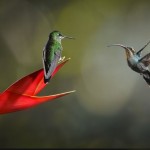
Things to Do in Costa Rica
National Park Golfito Wildlife

Juan Castro Blanco National Park
Juan Castro Blanco National Park
Located in the province of Alajuela, east of Ciudad Quesada, is the Juan Castro Blanco National Park.
Surrounded by water districts Zarcas, Venice, Zapote, Laguna, Tapezco, Palmyra, SarchíNorte, Yellow Toro and Rio Cuarto, among others. It has an area of 14.258 hectares.
It was created mendiante Act No. 7297 of April 22, 1992.
This desert of protected areas with water resucrsos of great importance to the north, tnto for human consumption, hydroelectric power generation and industrial consumption ael pair.
Here the rivers Platanar, Toro, Aguas Zarcas, Three Friends and La Vieja et al. Protect areas of primary forest in five important areas of life of the species of flora and fauna.
Within this national park importnates geomorphological features such as boilers, active volcanic foci (Volcano Platanar), inactive volcanic foci (Cerro Viejo and Cerro Pelon).
In addition, Quaternary volcanic cones, alluvial fans and alluvial sedimentation forms.
The vegetation of the area is very diverse in the Juan Castro Blanco National Park. Approximately 60% of the park is covered by primary forest mixed with patches of forest regeneration.
These forests are presented in five life zones according to Holdridge classification: transition to premontane forest perhumid, lower montane wet forest transition, rain, very humid forest tansición to rain, rain, montane forest and montane rain forest .
Featured Species are oak and Quizarrá. At the top is covered with a wash of many epiphytic plants, microclimates characteristic of cold, windy and wet.
Within Excel wildlife species like the quetzal, the peacock, the kettle black, the chachalaca, mammals such as ibex, two species of monkeys, armadillo, tepescuinte, tapir, and several species of cats..
Jaco Beach Costa Rica, Enjoy the Central Pasific Site, this region offers many of the best activities found in Costa Rica, from our Relaxing Massages to Extreme adventure tours.
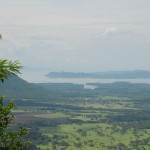
Things to Do in Costa Rica
Costa Rica Barra Honda National Park

Barra Honda national Park
Located in the province of Guanacaste, 22 km northeast of the town of Nicoya and with an area of 2.295.5 hectares. Barra Honda National Park was created with the Law No. 5558 of August 20, 1974.
The Barra Honda hill, about 300 meters high, consists of the type of limestone reefs, ie reefs by age because sobrelevantamiento mergieron caused by tectonic faults, developed about 60 million years.
These reef formations made up of blue and green calcareous algae and foraminifera, tiny marine protozoa covered by a calcareous shell, sponges and sea urchins.
Another important element of this area is its ability as an aquifer reserve populations are around.
The Barra Honda National Park contains an extensive system of independent caverans others that have been explored 19. The cave of Santa Ana reaches to 240 meters deep, contituyéndose in one of the most profound.
The most attractive and interesting are: the Velvet, Tampa and Santa Ana, with a profusion of stalagmites, stalactites, columns, beads, flowers and needles of gypsum, helicitas, popcorn, mushrooms, shark teeth and other features .
Velvet is the most abundant cave containing formations. One of them is called the body and has the characteristic of different sounds to the tap.
The trap is the one with the deepest abyss, from the entrance to the first drop is a vertical height of 52 meters. This cavern is also larger rooms have been found, one of which is formed by white calcite, which gives a dazzling effect of beauty.
The well has been a failure, which owes its stench of bat guano is the only one with an abundance of these mammals.
In Nicoa cave, they found a large number of human remains in 1970, and later pre-Columbian artifacts from India.
Barra Honda National Park Fauna
The park’s vegetation is in most deciduous, some of the most common species are rum-rum, Tempisque, El Jobo, Nude India, poroporo, the buzzard, soncoya, the guanaco, the carao, strawberry comb and Economic.
The fauna is very diverse: white-faced monkey, coyote, armadillo, armadillo, deer, raccoon, badger, weasel, fox missing, the magpie, the zapayol or Cataño and turkey vulture are some species can be observed in different areas of the park







